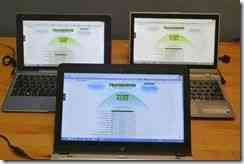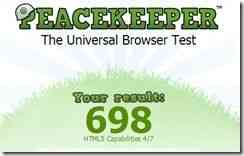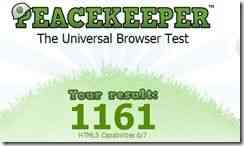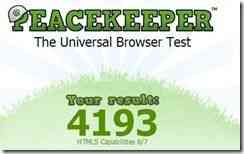 We like CloverTrail. It’s the only connected-standby capable X86 platform on the market and it blows every other Windows-capable platform out of the water when it comes to battery life but in terms of processing power it’s not quite enough to satisfy most people on a day-to-day basis. I’ve recently been testing AMD Temash and with about 2X the all-round processing performance it’s enough to satisfy most people. It’s efficient, but unfortunately you lose that CS-capability, the mark of an energy efficient Windows platform. At the top end of the efficiency-focused platforms are the Intel Core U processors used in Ultrabooks. They’re expensive and don’t offer CS capability but if its processing power you want, they are the king.
We like CloverTrail. It’s the only connected-standby capable X86 platform on the market and it blows every other Windows-capable platform out of the water when it comes to battery life but in terms of processing power it’s not quite enough to satisfy most people on a day-to-day basis. I’ve recently been testing AMD Temash and with about 2X the all-round processing performance it’s enough to satisfy most people. It’s efficient, but unfortunately you lose that CS-capability, the mark of an energy efficient Windows platform. At the top end of the efficiency-focused platforms are the Intel Core U processors used in Ultrabooks. They’re expensive and don’t offer CS capability but if its processing power you want, they are the king.
I took three devices based on each of these platforms and ran some tests to try and get some sort of guideline performance differential between the three and I’ve come up with 1:2:5. Where Clovertrial 1.8Ghz is the baseline, AMD Temash (high-end A6-1450) comes in at around 2X the processing power and a high-end Intel Core i7 at 2.0-3.2Ghz will hit 5X the performance of Clovertrail. Obviously these figures will vary across different tests and system builds but after running a number of tests, this is a ratio I’m happy to use as a guideline.
Peacekeeper, the browser performance test, is a good example as it addresses one of the most common usage scenarios for a PC. In the tests above (done with Chrome) you can see that 1:2:5 ratio showing up. (1:1.6:6 in this case) In a Floating point test I saw 1:2:5 and in Cinebench, 1:2:5. The Sunspider ratio was 1:1.4:6.3. The average across all the tests I performed was 1:1.9:5.1
In two days we’ll have another platform to consider. Intel’s 4th-Gen Core, aka Haswell, will eventually offer sub-10W parts (timescale unknown) with CS capability and a performance ratio that probably fits into the 4X range. In Q4 we’ll see BayTrail that will offer lower TDP and something like 2X the current Clovertrail performance seen here. Again it will be CS capable. From AMD we also need to consider Kabini, the higher-clocked, and higher TDP version of Temash although that’s really only for laptops and Ultrabook-alternatives.
Performance ratio of mobile Windows 8 capable platforms (guideline.)
Clovertrail:Baytrail:Temash:Haswell (low TDP):Ivy Bridge:Haswell (high TDP)
1:2:2:4:5:6
Clearly for Ultra Mobile PC fans looking to 2014, the BayTrail, Temash and low-TDP Haswell parts will be the most important and with BayTrail offering connected-standby, that’s the one that could work best in your next Windows 8.1 handheld.
Back to today though, here’s a (long) video showing three devices on three platforms with commentary and some visual indicators of performance.














Testing comments after a refresh of the theme….
In Windows OS, the current Atom tablets are very bad, while meanwhile, seeking another replacer is very difficult, here is Windows faultage.
In recent years, the Android and iPad are very active market like rainstorm pour down around, but the Windows faultage is still continuing, though Windows 8 launched over 240 days. Did not mean that is the W8 tablets must fully topple the Android tablets. The Windows tablets ought to give full scope to work its territories.
Many of people after known about the Atom z2760 tablet chose to stop a buy. The Android tablet and iPad do not meet more requirements, whereas the Atom z2760 tablet is also imbecile, but their price are much higher than the former two.
Currently, the newer Acer P3-171 is a very few selectable example could get you thought to supersede the Atom z2760 tablet, even though it isn’t perfect. However, it just launched, just 30 days, the Windows faultage — how obvious it was.
But, we are not yet seeing an 8 – 9 inch tablet with Core i3 3229y or similar performance, what time would it come in?
The Acer P3-171 (i3 3229y/SATA 64GB/11.6″ IPS/Keyboard kit) compared to the W510 (Atom z2760/eMMC 64GB/10.1″ IPS/Keyboard kit), the maker’s launch prices are almost the same between both, but the applicability in the P3-171 is much better than the W510, what would you think?
But then, still the Acer P3-171 (Core i3 3229y/SATA 64GB) is not so satisfactory thing. Acer taken with intentionally inhibited and limited on the P3-171, as their marketing policy.
Cons,
1. With non-interchangeable battery, paid cost for 700 – 799 USD to only get 300 (or 500) charge cycles. Outdoors, you unable to load an interchangeable battery.
2. With the fixed 2GB RAM, Running 64-bit Windows the RAM needed with 4GB at lowest. (The Acer P3-171 BIOS does not support for 32bit Windows)
3. The USB is one port only, though is USB 3.0, at least the two USB ports needed.
4. SATA 2.0 (3 Gbit/s, 300 MB/s), not SATA 3.0/6 Gbps interface, (though is much faster than the eMMC).
5. The keyboard kit is too heavy, weight over 600g, would rather buy a standalone version of P3-171 (i3 3229Y/SATA 64GB) with no keyboard kit. Maybe you take off its keyboard kit and put on home or office. If needed, would prefer to carry with a third-party’s USB keyboard weight 200g.
In the P3-171, looks the battery life and body weight are not good-enough, for light load it runs close to 6 hours, the tablet body weight 768g, of course, which is 11.6 inch screen.
But nonetheless said, the P3-171 is much better than the W510. If wanted to buy the Atom z2760 tablet, would rather buy a P3-171, despite that sounds like the z2760 with lower battery consumption.
Other words, if an 8 – 9 inch tablet come with Core i3 3229y and SATA 64GB, weight 690g and battery 60Wh to be likely working time over 8 hours, (its body’s deep in 15mm would be good-enough, does not need ultrathin).
—————————————-
Note:
The future Bay Trail is only with M and D series to support for SATA 2.0/3Gbps, no SATA 3.0/6 Gbps.
However, The Bay Trail T series will still continue with bad eMMC like predecessor Clover Trail Atom z2760. The Bay Trail T series does not support SATA, nor PCI-e, and is 32-bit Windows 8 CS only , it does not support 64-bit Windows nor for non-CS Windows version.
For the Atom z2760 tablets, the most problems came from the z2760 processor and eMMC, almost killed most of the Windows 8 tablets.
PCMark 7
System Storage: Importing Pictures
Clover Trail Atom z2760/eMMC 64 GB — 3.56 MB/s
Ivy Bridge/2.5″ HDD Hitachi 320 GB — 5.38 MB/s
Sandy Bridge/mSATA SSD 64 GB — 22.52 MB/s
——————————–
Comparison
A — 11.6″ IPS/Ram 2GB/SATA 64GB/Core i3 3229y/64bit Win8
B — 10.1″ IPS/Ram 2GB/eMMC 64GB/Atom z2760/32bit Win8
Cinebench R10
A — 2370/5237
B — 1001/1707
Cinebench R11.5
A — 0.6/1.67
B — 0.2/0.5
X264 HD Benchmark Pass 1 Video Recode
A — 43.75fps
B — 17.53fps
WinRAR compress
A — 2332KB/s
B — 518KB/s
TrueCrypt AES
A — 0.151GB/s
B — 0.06GB/s
Photoshop filter (Seconds)
A — 18s
B — 46s
(A — Power consumption 10w max during filter running. Expending 0.05Wh/18s)
(B — Power consumption 6w max during filter running. Expending 0.077Wh/46s)
1080P Playback/Processor Utilization
A — 22%
B — 29%
3DMark CloudGate Score/Graphics/Physics
A — 2396/3195/1278
B — 615/725/258
Game Street Fighter IV 1366×768
A — 28.97fps
B — 4.2fps
Game Resident Evil 5) 1366×768
A — 15.3fps
B — failed
Battery life (Running with light load mode)
A — 5.5 hours/4-cell 7.4v/5280mAh/40Wh
B — 9.5 hours/2-cell 7.4v/3880mAh/30Whr (Interchangeable Battery)
Processor idling/loading 100%
A — 6.2Watts/16.3Watts (Max)
B — 2.5Watts/6.7Watts
Screen
A — 11.6-inch/1366×768/IPS
B — 10.1-inch/1366×768/IPS (smaller screen is beneficial to the battery life)
I don’t think this is a fair assessment of the temash system…all of those browser test can not be indicative of performance, they are single threaded workloads, where the higher clocked atom and ivb can have an unfair advantage. For browser tests you are comparing a single 1.8ghz atom core, a 1-1.4ghz jaguar core and a 1.8ghz IVB core, which both the atom and IVB can turbo to further increase single threaded performance. Unless you are putting full load on all systems, the and without proper turbo profile will be at a disadvantage and look relatively worse…
@timon
Your analysis is inaccurate because Bay Trail-T isn’t using the same slow eMMC and LP-DDR2 RAM as Clover Trail!
Bay Trail-T updates eMMC support to version 4.5…
http://www.jedec.org/news/pressreleases/jedec-announces-publication-e-mmc-standard-update-v45
So drive performance is improving even for the Bay Trail-T, and the RAM support is definitely improving with the move to the much better LP-DDR3-1066 RAM.
Mind that for tablets and Smart Phones Intel needs to compete with ARM for power efficiency and cost…
Both eMMC and LP-DDR RAM supports lower power states, vital for maximizing power efficiency, and cost less and as long as ARM uses them, then so too does Intel in order to compete!
As for the lack of SATA 3… not seeing the problem because none of these SoCs will really be push pushing enough performance to need high end hardware… Even the 8GB RAM limit is plenty for their performance range…
While, since the Bay Trail-M starts at ≤ 4W and ranges up to 6.5W max… it’s possible we’ll still see the 4W version in Tablets as the basic limit for fan-less tablets just has to be below about 5W or at least stay below 5W most of the time…
@James
Atom z2760 – eMMC v4.41 Max bandwith 104MB/s, sounds like not so bad,
however, in fact:
PCMark 7 System Storage: Importing Pictures
Atom z2760 and eMMC 64 GB — 3.56 MB/s (with Samsung eMMC)
Ivy Bridge/HDD Hitachi 320 GB — 5.38 MB/s
Sandy Bridge/mSATA SSD 64 GB — 22.52 MB/s (With SATA 2.0)
OMG, 3.56 MB/s! it is much slower than 2.5″ HDD for System Storage.
eMMC v4.5 — Max bandwith 200MB/s. So what? What a storage performance would it bring? Could it be the eMMC v4.5 performance to move up to SATA 2.0 SSD?
We have had ever heard about the Atom z2760 and eMMC v4.41 to be how good and good, finally we seen very bad Atom z2760 and eMMC.
By contrast,
SATA 2.0 (3 Gbit/s, 300 MB/s), SATA 3.0 (6 Gbps, 600MB/s)
Also, iSSD/SATA and uSSD/SATA are size smaller enough (embedded SATA SSD).
@timons, the Image Importing test basically only shows the sequential speed for a task that involves both reading from a source and writing to the drive. Simulating copying 68 images from a thumb drive.
Like our other discussion pointed out eMMC is only slow in regards to sequential read/writes!… But in small read/writes it’s much faster than the HDD!
Besides, copying files is effected by CPU performance and the Clover Trail is low enough that it could have made the results worse.
Also, stop assuming SATA automatically provides better performance, there are plenty of low performance SATA drives!
Never mind most of them will cost a lot more than the eMMC as well!